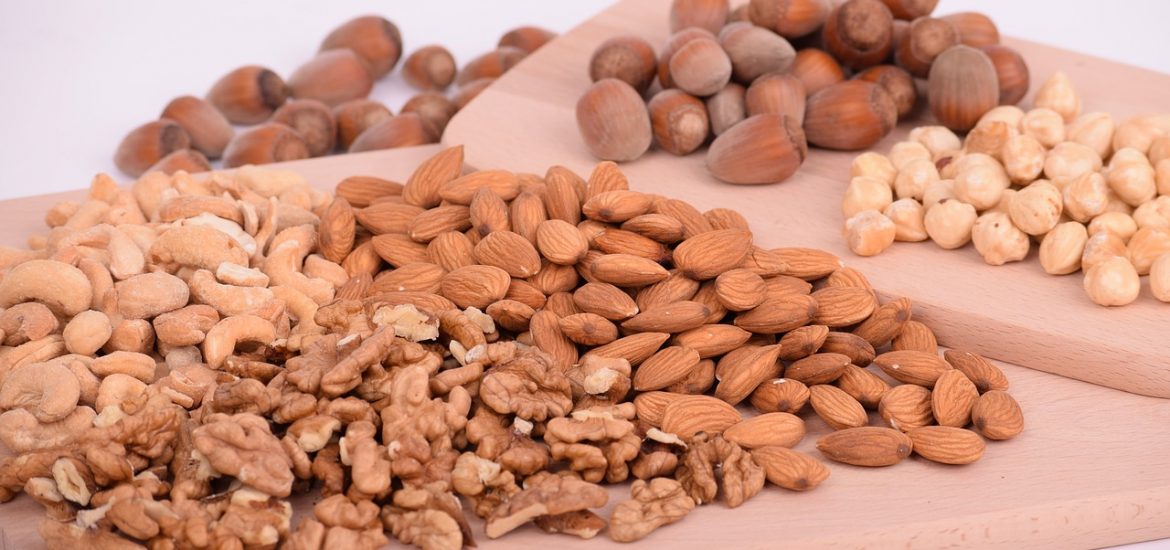Nuts are one of the most constant types of foods eaten by humans. Besides being small, compact, and easy to carry, they also pack large amounts of energy and vitamins. However, not all nuts are the same in terms of nutritional value. Here we take a look at some nutty favorites and what nutrients you can hope to consume with them by your next snack time.
- Almonds
They are among the most popular of nuts, and they are also one of the healthiest kinds out there. They originated from the Middle East where they are used in a variety of sweet and savory dishes. A 28g serving of almonds contain 5.9 grams of protein, 3.4 grams of fiber, 6.1 grams of carbohydrates, and 13.8 grams of total fat. It also contains nutrients such as vitamin E, Manganese, Magnesium, and vitamin B2. It also has the highest omega 6 to 3 ratio of all nuts, though it is recommended to be eaten along with other omega 3 sources such as oily fish.
- Cashews
Cashews originate from Asia and Africa, and are among the most popular of nuts. Its creamy taste also makes it among the best for people who want to try drinking unsweetened milked nuts. A 28g serving of cashews contains 0.9 grams of fiber, 5.1 grams of protein, and 12.3 grams of total fat. Raw cashew nuts also consist of a high level of health-protective compounds, including beta-carotene, antioxidants such as lutein, zeaxanthin, vitamin E, and oleic acid. Zeaxanthing and lutein, anti-oxidants are known to be beneficial for the eyes, and can help protect against the effects of macular degeneration. Cashew are also contain much a much higher carbohydrate content than other nuts, therefore making them potentially counter-effective for those on a low-carb diet.
- Peanut
They are probably the most popular nut out there, despite technically not being a nut (they’re legumes). As an honorary nut, they contain a whopping 7.1 grams of protein in a 28 gram serving, as well as 2.4 grams of fiber. They also contain large amounts of manganese, vitamins B1, B3 and B9, and magnesium. They also provide great benefits for those at risk for cardiovascular disease. A study wherein participants were provided with peanuts for a 3-8 week study experienced a significant decrease of triglyceride levels, as well as an increase of serum levels of minerals, especially magnesium.
- Pistachios
These nuts are most commonly served with its shell. They come from the Middle East, where they are used very liberally in decadent desserts. They have even spawned a trademark gelato flavor. Pistachios contain 2.9 grams of fiber for every 28 gram serving, as well as 5.8 grams of protein, and 12.4 grams of fat. They are great as a replacement for carbohydrate-based snacks, as they greatly reduce levels of circulating triglyceride, and that controlled daily servings reduces LDL-oxidation in those with hypercholesterolemia.
- Brazil Nuts
You guessed it—these nuts are from Brazil. They are the biggest nuts in this list and are considered the world’s biggest source of dietary selenium. Selenium is a mineral commonly found in soil, plays a key role in metabolism, has anti-depressant and mood-lifting elements, and has powerful anti-oxidant qualities. A 28 gram serving of Brazil nuts also contain 4 grams of protein, 2.1 grams of fiber, 18.6 grams of total fat, and 3.4 grams of carbohydrates. Less is more with Brazil nuts though; just a small handful of them per week, or simply one or two nuts per sitting, is sufficient to reap its benefits.
Which Nuts to Go Nuts for?
Eating any variety of nut, in controlled portions, is generally good for the health unless you have nut and peanut allergies. Almonds and Brazil Nuts are most recommended for their high nutrition content, but any nut can be a healthy and tasty choice for a snack.

